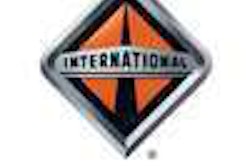Volvo Trucks North America and Mack Trucks on Wednesday, Dec. 17, applauded the Environmental Protection Agency’s commitment to implementing its 2010 emissions regulations as planned.
“EPA has clearly stated that it has no intention of changing the 2010 timetable, and it’s counterproductive and misleading to suggest that the agency might change its mind in the 11th hour,” said Per Carlsson, president and chief executive officer of Volvo Trucks North America. “Our focus should be on moving forward – making the industry’s transition to 2010 as smooth, efficient and uneventful as possible. That’s the only way to provide a significant benefit both to customers and the environment.”
All but one manufacturer serving the North American market – Navistar Truck and Engine Group – will use selective catalytic reduction (SCR) to achieve the near-zero emissions required by the EPA 2010 regulations; Navistar plans to offer “in-cylinder” diesel engine emissions solutions for the North American truck market in 2010.
“The development and testing of Mack’s SCR solution for 2010 is in advanced stages, and we are confident in our engines’ enhanced performance, emissions reduction and fuel savings,” said Dennis Slagle, Mack president and CEO.
The Owner-Operator Independent Drivers Association recently called for a reevaluation of EPA’s 2010 cutoff point for new heavy-duty engine technology. The request came after publication of a study conducted by NERA Economic Consulting that concluded the price of trucks employing 2010 technology would be significantly higher.
OOIDA argued that given the slowing economy and the burden it’s put on many owner-operators and carriers, the price premium would be another hardship on all parties in the trucking industry. Navistar, which helped fund the NERA study, called for a choice to purchase 2007-compliant technology as well as 2010-compliant technology.
“What we said all along is because of these catastrophic economic conditions, the smaller guys are really having a tough time,” said Ron Wiley, Navistar spokesman. “We said because of this, give truckers a choice. The bigger fleets and the well-heeled fleets, let them buy them (engines with 2010 emissions technology).”
Wiley reiterated to CCJ Wednesday, Dec. 17, that Navistar is “ready to go” with enhanced exhaust gas recirculation to meet the 2010 emissions standards. “We can see why the EPA would say this,” he said. “It’s an important issue. We never asked for a delay – just a choice.”
In a meeting last month with CCJ and other Randall-Reilly Publishing trucking editors, Timothy Shick, director of marketing for Navistar’s Engine Group, said the company will use its banked EPA emissions credits to buy the time necessary to calibrate its engines to achieve the agency’s demands for oxides of nitrogen (NOx) reductions. Navistar received credits for earlier-than-required compliance and lower-than-required emissions performance dating back to the first EGR engines marketed by the company in 2004. “All Navistar MaxxForce engines will be emissions-compliant for 2010, just as they are today,” Shick said. “If they weren’t, we couldn’t sell them.”
SCR technology treats exhaust with diesel exhaust fluid (DEF) based on urea to reduce NOx emissions. A coalition of industry organizations and suppliers has been working to establish the North American DEF distribution network; a similar network already exists in Europe. “It’s already being successfully used around the world by hundreds of thousands of trucks every day, including those in extreme operating conditions,” Slagle said. “And it clearly works here in North America, as our test trucks have been demonstrating.”
According to Volvo and Mack, a recent industry forum in the United States put the cost of DEF at $2.70 per gallon; about two or three gallons of DEF are needed for every 100 gallons of diesel. “More than half a million trucks use SCR every day in Europe alone, from the Arctic Circle to Turkey, so we know it works in any climate and condition,” Carlsson said.
In Navistar’s solution, a high-pressure common-rail fuel injection system delivers diesel in a finer mist and with improved sequencing to allow for a more efficient fuel burn, Shick says. The MaxxForce’s high-strength compact graphite iron engine block is designed to handle the higher pressures. Other elements of the package include a proprietary combustion bowl design and advanced air management using EGR. Some of the attributes of the MaxxForce include lower weight relative to competitors and the ability to achieve full torque at a lower rpm, allowing drivers to maintain top gear longer.
“Ultimately, Navistar doesn’t believe SCR technology is mandatory for meeting 2010 emissions regulations,” Shick said. “Our engineers are currently working hard on finding in-cylinder NOx and particulate emissions solutions that will give our customers productive, fuel-efficient and clean diesel engines without the added weight or complexity SCR systems add to trucks.”











